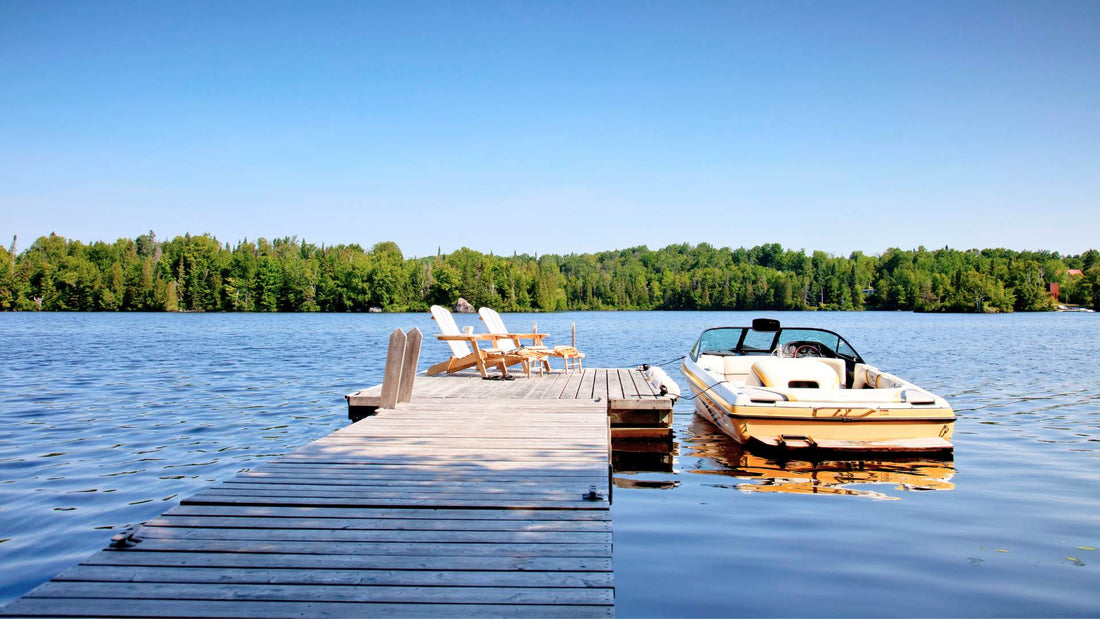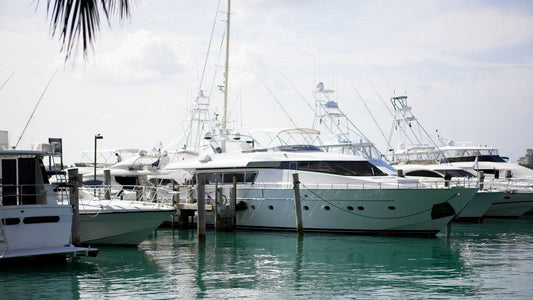
How to Choose the Perfect Lake Dock: A Boater’s Ultimate Guide
Nicholas HeislerShare
Choosing the right lake dock is a pivotal decision for any boater, as it significantly enhances waterfront experiences, ensures safety, and protects watercraft investments. This comprehensive guide delves into the essential factors to consider when selecting the ideal dock tailored to your specific needs.
Table of Contents
- Assessing Your Waterfront Property
- Defining the Purpose of Your Dock
- Exploring Dock Types and Materials
- Considering Installation and Maintenance
- Navigating Legal and Environmental Regulations
- Budgeting and Long-Term Investment
- Enhancing Your Dock with Accessories
Assessing Your Waterfront Property
Understanding the unique characteristics of your waterfront property is the first step in making an informed dock selection.
Shoreline Characteristics
- Slope: A gradual shoreline slope may accommodate various dock types, while a steep slope might necessitate specific designs to ensure stability and accessibility.
- Composition: Identifying whether your shoreline is rocky, sandy, or grassy will influence the type of dock suitable for your property.
Lake Bed Composition
- Type: Determining if the lake bottom is sandy, rocky, or muddy is crucial, as certain dock structures require firm foundations, while others are better suited for softer beds.
- Impact on Installation: The sediment type affects dock stability and the complexity of installation. For instance, pipe docks are ideal for firm, even lake bottoms, whereas floating docks are preferable for softer or uneven beds.
Water Depth and Fluctuations
- Depth Measurement: Accurately measuring the water depth at different times of the year helps in choosing a dock that remains functional across seasons.
- Fluctuations: Understanding water level variations is essential. Floating docks, for example, adjust to changing water levels, making them suitable for lakes with significant fluctuations.
Environmental Conditions
- Exposure: Assessing the area's exposure to wind, waves, and boat traffic will inform the choice between more stable structures like permanent docks or flexible options like floating docks.
- Wildlife and Vegetation: Considering local wildlife and vegetation ensures that the dock design minimizes ecological disruption and complies with environmental regulations.
Defining the Purpose of Your Dock
Clarifying the primary functions of your dock will guide its design and features.
Boating Needs
- Mooring and Launching: Determine if the dock will be used primarily for mooring boats, launching watercraft, or both. This will influence the dock's size, shape, and necessary accessories. You may want to check out our blog about choosing the right lake boat!
- Watercraft Accommodation: Consider the types and sizes of watercraft you own or plan to acquire to ensure the dock can safely accommodate them.
Recreational Activities
- Swimming and Fishing: If swimming or fishing are primary activities, incorporating features like ladders, railings, or designated fishing areas can enhance safety and enjoyment.
- Social Gatherings: For those intending to use the dock as a social space, ensuring ample space and stability is crucial.
Exploring Dock Types and Materials
Selecting the appropriate dock type and materials is vital for durability, functionality, and aesthetics.
Permanent Docks
Piling Docks:
Constructed by driving piles into the lake bed to support the dock platform.
- Pros: Highly stable and durable, suitable for areas with significant wave action.
- Cons: Higher installation costs and potential environmental impact due to the invasive installation process.
Crib Docks:
Built using large crates (cribs) filled with rocks, upon which the dock rests.
- Pros: Extremely sturdy and long-lasting.
- Cons: Complex construction, higher costs, and possible ecological disruption.
Semi-Permanent Docks
Pipe Docks:
Feature a framework supported by pipes driven into the lake bed.
- Pros: Adjustable height, cost-effective, and relatively easy to install.
- Cons: Less suitable for deep or rough waters and may require seasonal removal in areas with ice.
Temporary Docks
Floating Docks:
Consist of buoyant platforms that float on the water's surface, anchored in place.
- Pros: Adaptable to changing water levels, easy to install and remove, and suitable for various water depths and bed conditions.
- Cons: Less stable in rough water conditions and may require regular maintenance to ensure buoyancy and stability.
Material Considerations
Wood:
- Aesthetics: Offers a classic, natural look that blends well with most landscapes.
- Maintenance: Requires regular upkeep, including sealing and inspections for rot or pest damage.
Aluminum:
- Durability: Lightweight, corrosion-resistant, and low maintenance.
- Considerations: May lack the traditional appeal of wood but offers superior longevity.
Composite Materials:
- Benefits: Combines the look of wood with the durability of synthetic materials, resistant to rot and pests.
- Cost: Generally more expensive upfront but offers long-term value due to minimal maintenance requirements.
Considering Installation and Maintenance
Evaluating installation methods and ongoing maintenance is crucial for the dock's longevity and functionality.
DIY vs. Professional Installation
- DIY Installation: Suitable for simpler dock designs and those with construction experience.
- Professional Installation: Recommended for complex or permanent docks to ensure safety and compliance with regulations.
Maintenance Requirements
- Routine Inspections: Regularly check for structural integrity, wear, and environmental damage.
- Seasonal Considerations: In regions with harsh winters, plan for dock removal or protective measures to prevent ice damage.
Navigating Legal and Environmental Regulations
Compliance with legal and environmental guidelines is essential to avoid fines and protect the ecosystem.
Permitting and Zoning
- Regulations: Research local, state, and federal regulations governing dock construction and usage.
- Permits: Obtain all necessary permits before commencing construction to ensure legal compliance.
Budgeting and Long-Term Investment
- Initial Costs: Factor in materials, labor, and permits when budgeting for a dock.
- Long-Term Value: Consider durability, maintenance costs, and potential impact on property value when selecting a dock type.
Enhancing Your Dock with Accessories
- Safety Features: Install railings, ladders, and lighting to improve security and usability.
- Convenience Additions: Add benches, storage boxes, and cleats for functionality.
- Recreational Enhancements: Incorporate slides, diving boards, and fishing rod holders for added enjoyment.
Enjoy You New Lake Dock!
Choosing the right lake dock involves careful consideration of your waterfront conditions, intended use, budget, and long-term maintenance. By understanding the various dock types and materials, complying with regulations, and investing in accessories, you can create a safe, functional, and enjoyable dock that enhances your waterfront property for years to come.
When it comes to keeping your boat safe and secured at the dock, look to Captains Preferred Products for your dock lines and boat fenders. Find everything you need to keep your boat maintained all season—always at the best prices.




